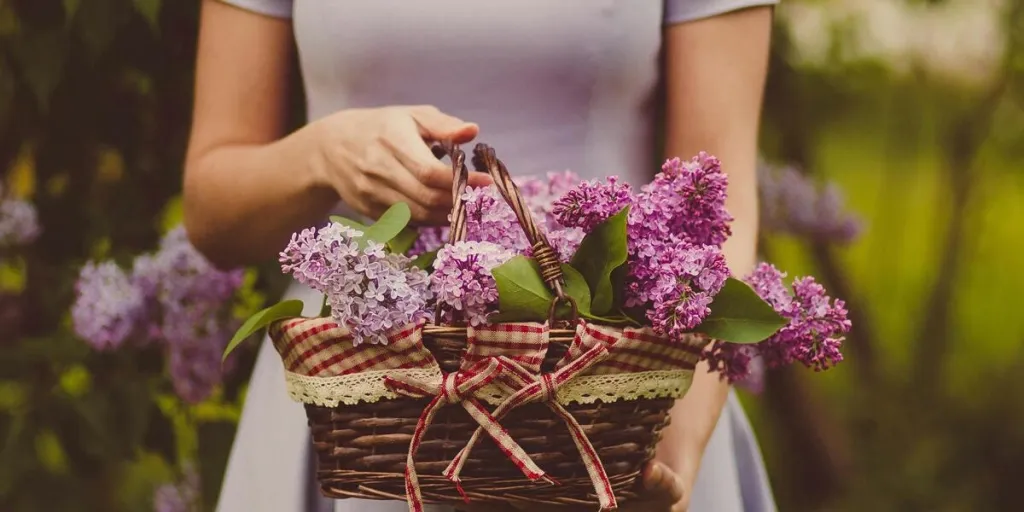The flower packaging industry is experiencing significant market growth due to the increased global demand for flowers: People are buying more flowers, either as gifts or for decorative purposes.
Flowers not only improve a space’s aesthetic appeal but have also been shown to improve people’s overall health and well-being. For example, a study found that 100% of the participants stated being happier with flowers in their workspaces, while 83% reported that flowers had a calming effect. In addition, 75% said that flowers reduced their stress levels, while 50% were more productive, and 53% were more at ease working with flowers nearby.
Another report found that the U.S. floral gifting market will be worth $17.5 billion by 2025, growing at a compound annual growth rate (CAGR) of 5%.
This high demand for flowers across various domains creates opportunities for businesses looking to offer unique and customizable flower arrangements and packaging.
Here we’ll provide tips for selecting the best flower packaging for your customers, including the various types and practical factors to consider.
Table of Contents
Flower packaging market overview
Types of flower packaging to consider
6 practical tips for selecting the best flower packaging
Summary
Flower packaging market overview
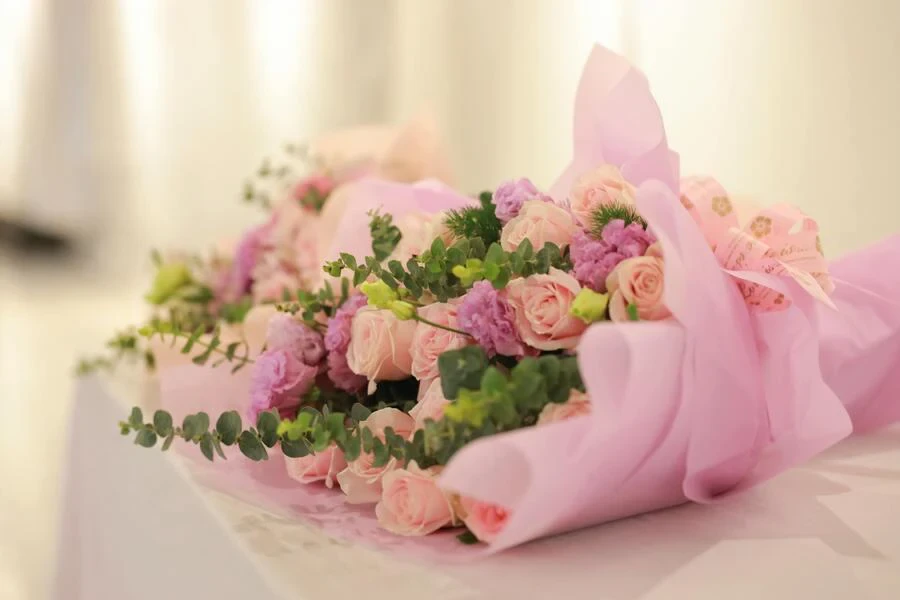
The flower packaging industry is anticipated to grow due to the increased demand for cut flowers during festivals and special events such as weddings and birthdays. This is evidenced in a report by the U.S. Department of Agriculture, which found that 22% of Americans bought flowers during Valentine’s Day, resulting in $2.3 billion in sales in a single day.
As such, the global cut flower packaging market was estimated to be worth $3.83 billion in 2023 and is projected to reach $5.96 billion by 2032, growing at a CAGR of 5.03%.
This market growth is driven by multiple factors, including:
- Rapid technological advancements in flower packaging which increase shelf life
- Increased per capita income
- Higher demand for packaging that protects flowers from damage, theft, and loss during transportation or storage
- Increased access to flower shops and florists through online sales channels
- Increased access to environmentally friendly flower packaging
- Higher demand for luxury flower packaging
Types of flower packaging to consider
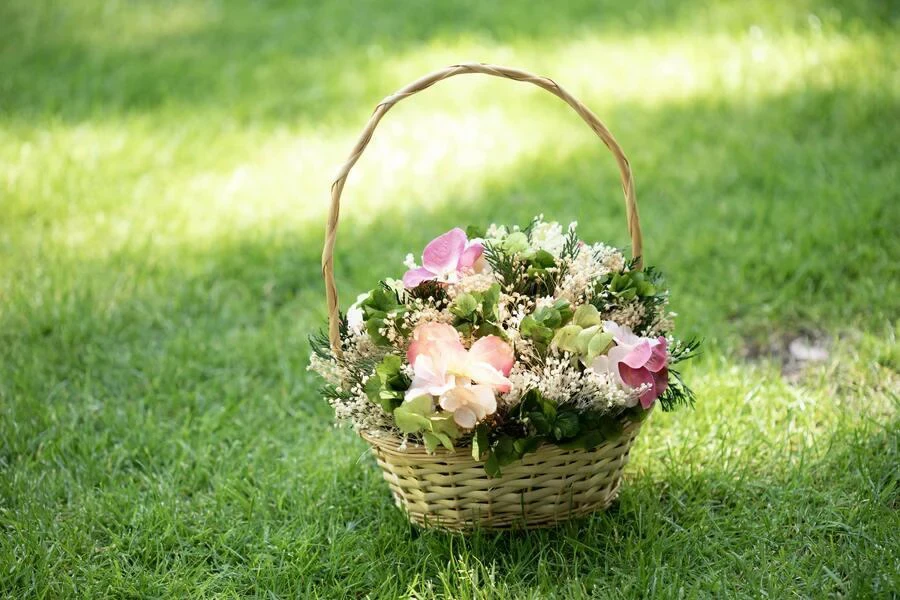
Flower packaging comes in many different types. They are designed to protect and enhance the presentation of flowers while also catering to different preferences and occasions. Some common types include:
1. Paper packaging
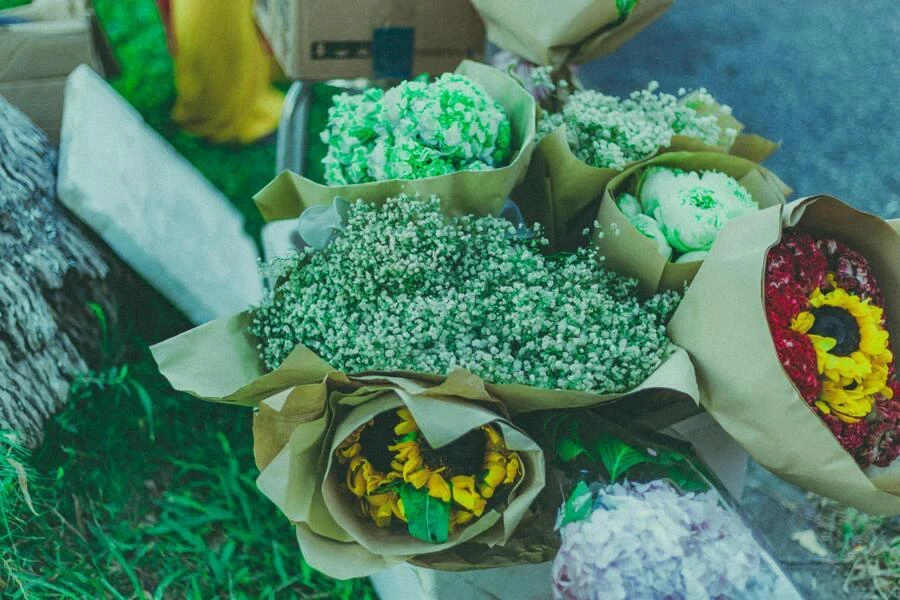
Paper flower packaging provides reliable protection and can improve a flower arrangement’s aesthetic appeal. This packaging comes in various forms, such as wraps, cones, sleeves, or even decorative paper used to bundle bouquets. Therefore, florists must ensure that the selected paper packaging complements the beauty of their arrangements.
Paper packaging provides a natural and eco-friendly option for presenting flowers. It can be customized with different prints, patterns, or textures to enhance the visual appeal.
2. Baskets

Baskets are unique flower packaging due to their charming and rustic presentation for bouquets and floral displays. They come in various materials, including wicker, bamboo, or metal wire. Flower baskets can be lined with fabric or plastic to hold water for fresh flower arrangements.
Flower baskets add a touch of natural elegance to the flower arrangement and offer stability. They are popular among customers since they can be easily repurposed or reused after use.
3. Boxes
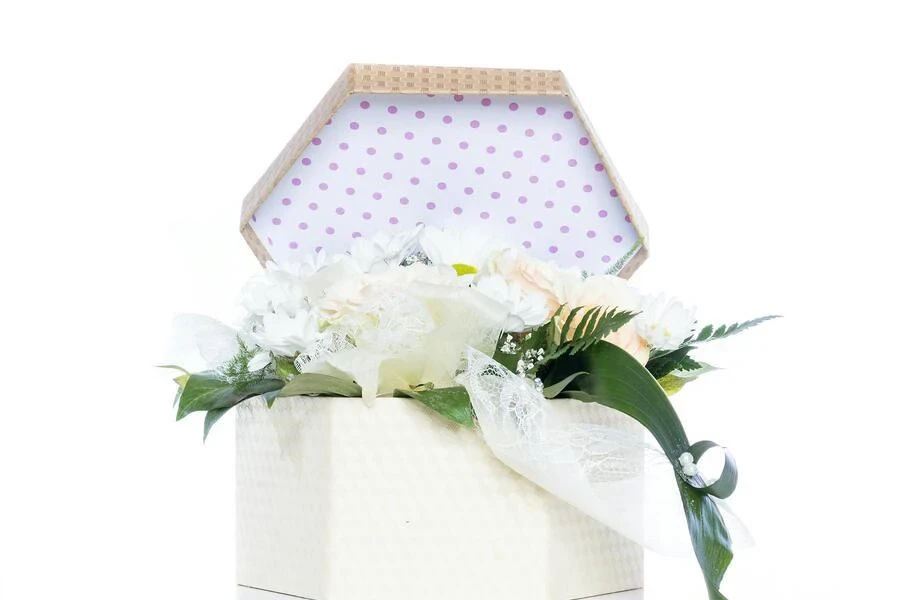
Flower boxes come in different shapes, sizes, and designs and are made from various materials, such as cardboard, wood, or ceramic. They often have a layer of foam at the bottom, which holds water for the flowers, helping to ensure the flowers remain fresh.
Flower box packaging is often used for gifts, special occasions, or events. They are also ideal for people with limited time to care for fresh flowers as they do not need further rearrangement, such as by being transferred to a vase or container, since the flowers already have access to water.
4. Film
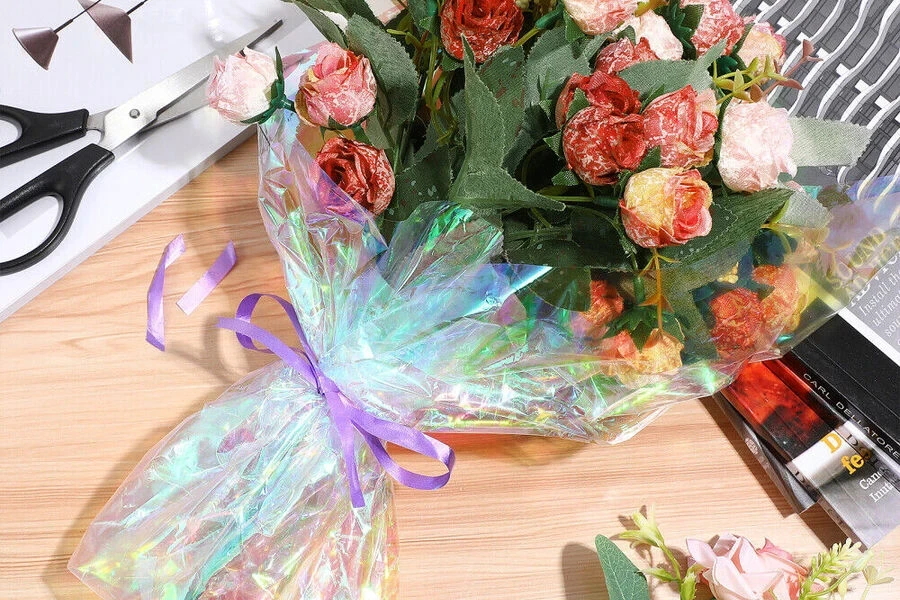
Film packaging, such as cellophane or transparent wrap, is often used to cover and protect flower arrangements. It provides a transparent and glossy finish that allows the flowers to be seen while keeping them secure and fresh.
Film flower packaging‘s lightweight, flexible, and easy-to-manipulate features make it suitable for various types of bouquets or floral designs.
5. Plastic bags
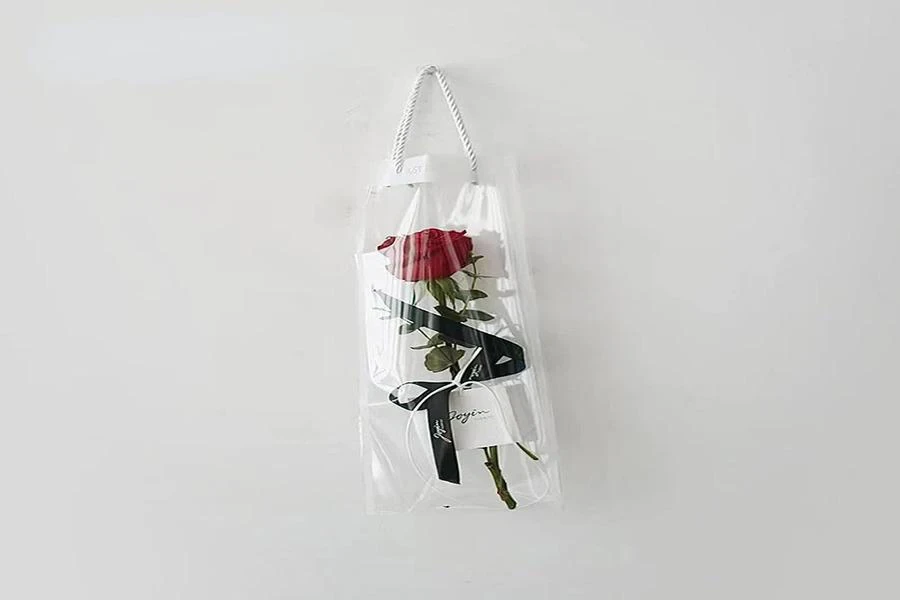
Plastic bags are often used for carrying bouquets or multiple flower stems. They are usually made from durable plastic materials and come in various sizes and styles. For example, these plastic flower bags are popular for their affordability and versatility.
While convenient and durable, non-biodegradable plastic bags raise environmental concerns due to their detrimental effects on nature. As a result, it’s advisable to choose sustainable alternatives.
6 Practical tips for selecting the best flower packaging

Unique flower packaging helps to attract customers and add value to your brand. Packaging designs should combine functionality, aesthetics, and sustainability.
Here are six tips to help you choose the suitable flower packaging:
Understand your customer needs
Understanding customer needs helps design and select floral packaging styles that are sure to resonate with them. Some factors to consider are the occasions they’re likely to be used for, as well as user expectations and preferences. For example, some may prioritize eco-friendly options, while others may prefer luxurious or traditional packaging styles.
Understanding your customers leads to improved experience and satisfaction since the packaging is tailored to their needs.
Choose the right material
Choosing the proper packaging materials is essential in flower packaging. The material impacts the floral arrangement’s aesthetic appeal and provides adequate protection.
Different flowers may require different packaging materials. For example, unlike dry and artificial flowers, fresh flowers require materials that help maintain their freshness, such as porous paper.
Some factors to consider when selecting the packaging material include durability, sustainability, breathability, moisture retention, and aesthetic appeal.
Proper wrapping
Wrapping techniques are crucial to protect the flowers and maintain their visual appeal. For example, diagonal wrapping results in a polished arrangement, while adding a ribbon helps secure the bouquet.
The floral wrapping should be secure yet gentle enough to avoid damaging delicate blooms or foliage. Pay attention to details such as folds, creases, and sealing to maintain the integrity and beauty of the arrangement.
Manage moisture
Managing moisture helps preserve the freshness and longevity of flowers. The packaging materials and designs chosen should provide adequate ventilation and moisture control to prevent wilting or decay.
However, too much moisture can be harmful as it can lead to mold or rotting. Make sure that flower packaging is not overly damp.
Branding and personalization
Branding and personalization can set your flower packaging apart and create a memorable impression on your customers.
Consider incorporating your logo, colors, or unique design elements into the packaging to reinforce your brand identity and differentiate your offerings from competitors. Personal touches such as handwritten notes or custom labels can also add a thoughtful touch that resonates with customers.
Keep up with trends and innovations
Knowledge of the current industry trends and innovations helps stay ahead of the competition and meet constantly changing customer needs.
It is essential to stay informed and adaptable to new materials, designs, and techniques. Examples of these trends to watch out for include eco-friendly packaging, vintage themes, and minimalistic designs. For innovative solutions, consider developments such as reusable bags, dual-purpose containers, or uniquely shaped boxes.
Summary
The flower packaging market is experiencing significant growth due to increased demand for flowers worldwide. In addition, an increase in disposable incomes, especially in developing nations, is significantly driving the demand for flower packaging. These conditions create opportunities for businesses in the flower packaging sector that can be leveraged to improve business competitiveness and performance.
However, maximizing the potential of this market growth requires a comprehensive understanding of your target customer. This includes the types of floral packaging they prefer, wrapping techniques they consider appealing, and significant trends and innovations. In addition, adding personalization and branding elements to the flower packaging helps differentiate your brand from competitors.
Implementing the insights shared in this blog can help better serve your customers and meet their evolving needs and preferences.
For a huge range of flower packaging products and materials, visit Alibaba.com.
